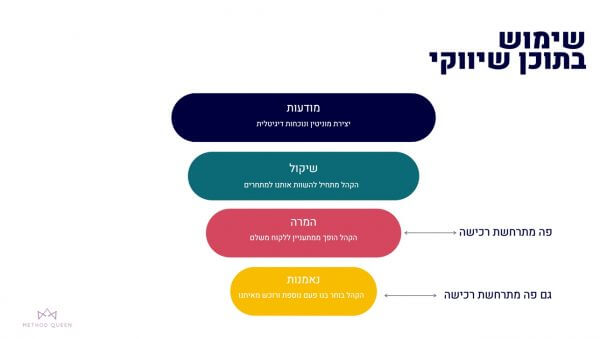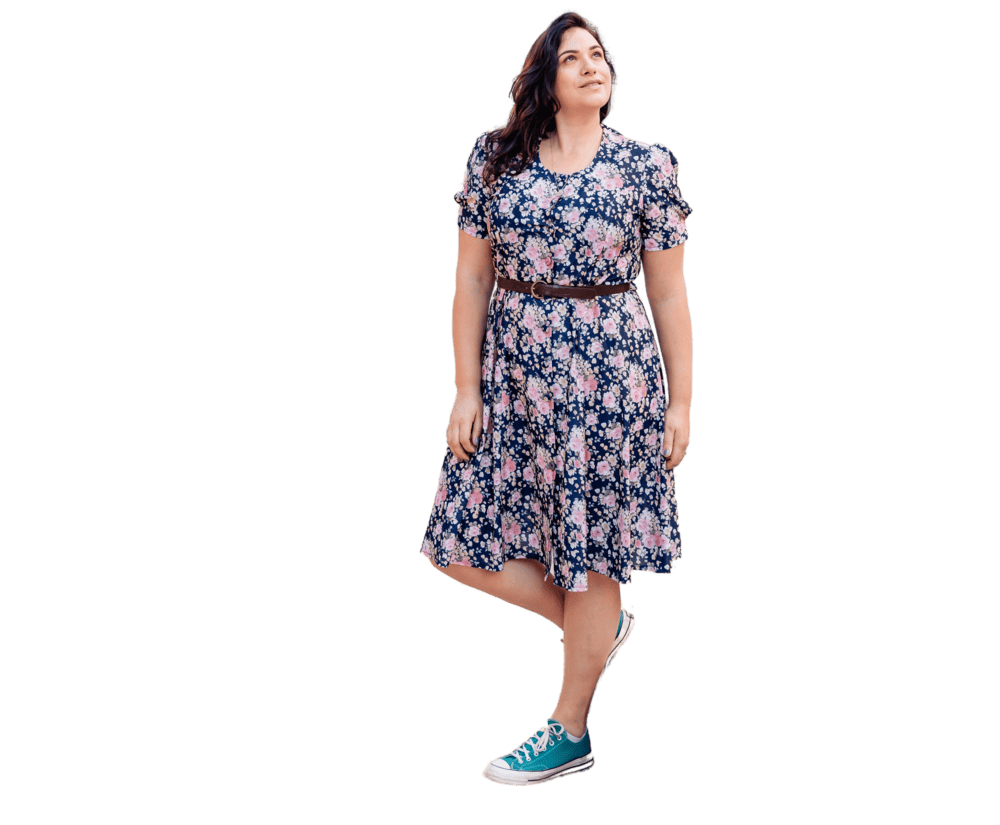What is a marketing funnel and how to build it correctly for your business

We’ve all heard the term “marketing funnel,” but how deeply have we delved into how to construct it properly to maximize our business activity? Here’s everything you need to know, plus steps for preparation and building a marketing panel for your business.
You’re sitting in a café, reading your emails, and waiting leisurely for your almond milk latte and the cookie you ordered. Suddenly, unexpectedly, a belly dancer appears, bouncing right near your table. After a few seconds of her performance, she offers you to purchase a ticket to her show.
Strange, isn’t it?

So, as business owners or digital marketers, we’re essentially doing this exact thing to our customers.
We allow them to read content on our blog, watch tutorials we’ve prepared, or be impressed by our website, but then we bombard them with banners, pop-ups, and pop-up windows asking them to buy something.
Crafting a savvy sales funnel starts with putting yourself in the shoes of your digital asset users. A top-notch funnel not only helps us establish trust with our audience but also delivers genuine value and lets us decide how to keep them engaged with our content. Ultimately, this transforms casual visitors into avid fans of our brand.
As business owners, we have business goals we want to achieve.
Once we define these goals, we want to create panels that will lead our prospects to become customers, according to the scoring points of our business.
Before diving into the nitty-gritty of sales funnel stages, let’s lay some groundwork. It’s essential to touch on a few key elements that will shape and refine your funnel, tailored specifically to your business and the types of customers you’re aiming to reach.
First things first: understanding your audience. Who exactly are we speaking to? Who are our customers?
Now, I won’t get too into the intricacies of creating customer personas, but it’s crucial to have a clear picture of who your content consumers are. This knowledge forms the backbone of how we communicate our message effectively.
This brings me to the entry points to the funnel.
You see, many times we think about creating a funnel without understanding where it starts and how the customer searches for information. And that can lead us to failure.
When I first launched my digital course, I fantasized that visitors to the website would go to the course page and purchase it automatically. Guess what? That didn’t happen.
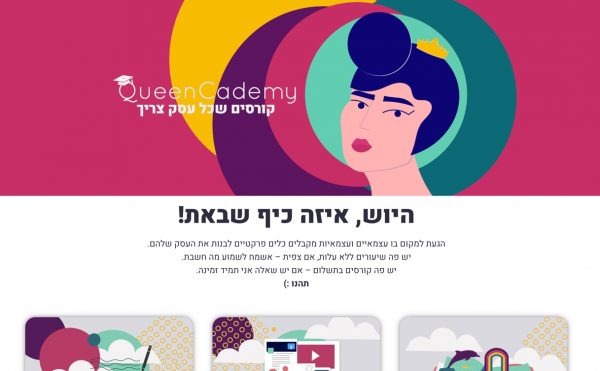
This is my courses website. I actually invested in it. 😊
So if I wanted the course to sell, I needed to understand what the entry points to my sales funnel were.
One possible entry point is people who enter my website deliberately. Whether they searched for “Reitler course” in a search, clicked on a link to my website somewhere, or searched for specific information and found themselves on my blog.
But other possible entry points are:
- Paid ads on social networks or Google.
- Visitors to our profiles on social networks.
- The mailing list receiving emails from us.
Each entry point is the beginning of the funnel, and we need to pay attention to it.
Head of Marketing Funnel
Can you guess how many people entered the stream?
Our goal is to attract as many people as possible, enticing them with the value we offer, to register on the platform we are creating for content.
We can draw people to our site to become followers on our YouTube channel, follow us on Instagram, TikTok, or any other digital asset we want to develop.
In digital marketing, there are several options for marketing strategies for an interested audience in our digital assets.
Search Engine Optimization (SEO).
This involves understanding how our audience searches for content and using relevant keywords to rank higher in Google searches. This is applicable to YouTube as well, and to the title given to our video.
This audience will be exposed to us, to our content, and to the unique value we have to offer.
Paid Advertising
Paying Facebook or Google ensures exposure to new audiences if the advertising is done well. If the campaign is successful, we can encourage new interested parties to visit our website or our business page.
Content Promotion on Social Networks
Interesting and eye-catching posts on various platforms will attract interested parties to continue following us and understanding who we are.
These are the main options, but they are not the only ones. You can pay for advertising in online magazines or news sites, collaborate with other businesses, or anything else that allows for significant exposure to your digital assets.
The heart of the marketing funnel
Here we convert traffic into interested parties. Or in professional language – leads.
Leads are people who have shown interest in our content and have chosen to take action by providing their details. This could be through a pop-up, a landing page, a sponsored post, signing up for a newsletter, subscribing to a YouTube channel, etc.
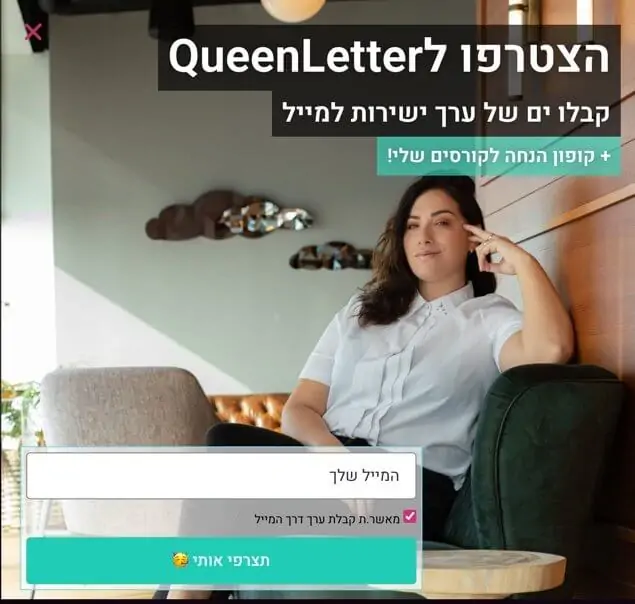
Pop-up inviting to subscribe to the newsletter.
So, we always, always, always want to get as many people from the top of the funnel to leave some kind of contact, so we can start communicating with them.
On my website, there’s a pop-up offering to subscribe to the newsletter, and every month dozens of people leave their emails hoping to get some interesting value (and I really try to send interesting value).
Leaving contact details is a true expression of trust. Our audience basically tells us that they trust us and the value we have to offer and allows us to connect with them. It’s precisely the place to think about deepening this trust and laying the groundwork for our bottom-of-the-funnel offer.
To encourage people to leave their contact details, you can offer them a free guide or webinar registration, thus subscribing to our mailing list.
But not only that, we can ask our YouTube viewers to literally click ‘Follow’, (I do this!), we can offer an introductory meeting, we can promise specific value in our newsletter – anything that encourages our customers to choose to leave details.
The goal is to enable the audience and us to develop a relationship based on trust, understanding that the more they’re exposed to our content, our value, and our ideas, the closer they come to making a purchase.
The bottom of the marketing funnel
Here’s where the magic happens.
Prospects who’ve made it this far turn into customers. The funnel fulfils its purpose.
For a digital business, this might be a purchase.
For a physical business like a hair removal clinic, it might be appointment bookings, but as with anything, there’s a lot of psychology behind the marketing funnel. There are things that affect our conversion ability. Whether it’s the appearance of the sales page. Whether it’s the language we use and how we highlight the benefits to our audience. Whether it’s a basic user experience.

Purchasing a course after passing through the marketing funnel.
Here are 5 tricks that will help you with conversions at the bottom of the marketing funnel:
Reduce the number of fields in the form:
If you feel like you need the full name, email, mobile number, address, occupation, and more – you’re mistaken. The fewer actions we ask our audience to take, the more likely they are to purchase from us.
Limited-time offer:
People fear missing out (FOMO). It’s true. If you offer them a time-limited deal, it triggers their fear of missing out, likely pushing them to make the purchase now.
Bundling:
In the book “Predictably Irrational” by Dan Ariely, he explains that sometimes to make something attractive, you need to add a sweetener. This worked in an experiment where a chocolate bar was sold at a certain price, but almost the same thing was spent if you purchased that same chocolate bar plus another one. This also works in digital marketing. If you offer two products at an attractive price (or three), the chances of purchase increase. Many times you’re offered to add something at a discounted price at checkout, and many of us do add that product.
Abandoned cart campaign launch:
This tip is mainly for those working with email automation. We can identify the audience who was in the sales process and decided to abandon the digital shopping cart (assuming they’ve visited the website before and we have their email). If we send an email to that same customer who didn’t complete the purchase, with an offer or even just a reminder, we increase our bottom-of-the-funnel conversion rates.
Digital testimonials:
Do you have people who have already enjoyed your products? Great! Let others see what the experience was like working with you. Conversion rates dramatically increase when we understand that there are “mom and dad” for a certain product or service.
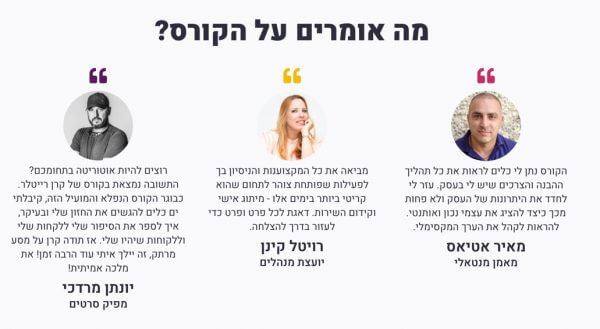
Invest in gathering feedback from customers and document the positive feedback.
Building relationships is an investment.
Selling to new customers all the time is exhausting. It takes a lot of effort to rebuild trust with the audience each time. But… if someone has trusted us in the past and liked our service, it will be much easier to convince them to buy from us again.
Your brand evokes emotions in others. If you’ve worked correctly, these emotions are positive. We want to deepen our relationship with the audience, continue to provide them with free value and paid offers.
Plus, who doesn’t love a personalized offer tailored just for them? It’s all about speaking directly to their needs. Here’s how to nail it:
Complementary Products:
The goal is to try to maximize the value your audience can get from you. If someone buys your digital course, you can offer them a coaching call. It’s clear that this additional product has value.
Turn Your Audience into Ambassadors:
Offer a referral program where everyone wins. The referred prospect is interested, and both receive a discount. We’re familiar with this from big tech or corporate companies, but we can definitely implement it for our small businesses and turn our customers into recommending ambassadors.
Discounts and Special Offers:
Discounts and special offers are a fantastic opportunity to allow our audience to get value at a discounted price. In fact, we’re allowing them to purchase from us at a more convenient price, and sometimes, this is the way to turn an audience interested in our free value into paying customers. And of course, to enable customers to purchase again.
Newsletter and Free Value:
Don’t stop providing real and useful value to your audience. This constant warm-up allows our customers to continue those positive feelings towards our brand and remember who we are and how we can help when they need us or someone like us.
The panel doesn’t go straight.
If only our customers smoothly glided from the top to the bottom of the funnel, life would be a breeze—we’d all be retired in the Canary Islands by now. But let’s face it: most of our audience gets stuck somewhere in the middle.
Some make it to the bottom and then loop back up. Others just drop out altogether. Only a tiny fraction actually seal the deal and complete the funnel (and even return for a bit more warming up).
But here’s the kicker: there are those speedy warm-ups who are ready to hit that “buy now” button right after landing on our website. Just last week, I got a message from someone who said, “Until this morning, I didn’t even know who you were,” and that same day she snapped up my full digital course.
That’s why we’ve gotta create multiple pathways within the funnel, so our audience can pick the route that suits their speed of getting to know us.
Now, let’s rewind and imagine that same customer who jumped on the digital course straight out the gate. What if I’d asked her to sit through a video or sign up for a free guide first? It might’ve put the brakes on her purchase.
That’s where direct sales methods swoop in to save the day, making sure we don’t miss out on those lightning-fast warm-ups.
Within our digital assets, there are several wonderful ways to do this:
- Providing transparent pricing on the page so customers can take action without contacting us.
- Frequently Asked Questions (FAQs) so they can get answers to their questions.
- Chat, WhatsApp link, or bot so they can get quick answers to specific questions.
- Offering a first lesson of a course as a gift so they can get impressed by the content.
- Content guarantee and full money-back within x time.
As business owners or digital marketers, we build a marketing funnel and try to track the path our customers will take. The reality is much more complex than that. Most of our audience moves back and forth and not in a linear path. Our job is to allow the audience to stay within the funnel and not to leave it altogether.
Here are some ways to do it:
Facebook retargeting campaign.
It’s a way to market back to people who visited the site or added a product to the cart and left it.
It actually works by painting audiences through pixel planting on the site, which allows Facebook to know exactly who came to our site and to target them again.
Newsletter.
Sending a newsletter and mailing with value and offers is an excellent way to keep our audience in the loop. My recommendation is to provide value in the newsletter that they wouldn’t get anywhere else. It allows the audience to feel part of an exclusive club and want to open the content.
Let’s be practical.
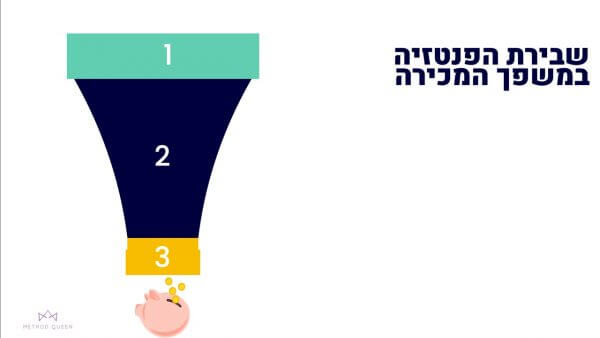
The audience doesn’t enter from the same point and exit from the same point; let’s not be naive…
Many of my customers believed that the marketing funnels we build are solely intended to increase sales. And although you can’t go to the grocery store with momentum, a significant part of the funnel is designed to expose us to a new audience, strengthen our brand, and our presence.
If you revisit this article, you’ll see that at the beginning of the funnel, we have a lot of traffic, and as we descend into the marketing funnel, the movement decreases, and a relatively small percentage completes a purchase.
Still, we want to reach as many people as possible because it’s not unreasonable, especially in a small country like Israel, that the more ambassadors we have, the more projects or significant referrals will come to us that wouldn’t have come to us otherwise.
At every stage of the funnel, your role is to increase the percentage of users moving to the next stage.
We don’t create our marketing funnels just based on how it seems to us and then leave them to fate. There’s a continuous process of optimization to be done, so it’s important to track our performance and go back and refine the funnel.
If you have a website, connect it to Google Analytics and track your performance there. It takes time to understand how to read the analytics, but once we know what to look for, it’ll be much easier for us to go back and refine the funnel.
So how do you start building your first marketing funnel…
Preparing for your marketing funnel:
- Choose a product or service you want to promote.
- Develop questions that would interest your target audience about the product or service.
- Write a list of all the tactics that can help you reach a new audience: webinars, free training, downloadable guides, etc.
- Understand which digital platforms your audience is on.
Building your marketing funnel, step by step:
- Write down all the ways of the top of the funnel, through which your audience will be exposed to you: blog articles, posts, videos.
- Prepare “lead magnets,” free downloadable products like guides, tutorials, or webinar sign-ups.
- Design a landing page or registration form to collect details.
- Ensure that the details go directly to your mailing system or to a closed list in Google Docs so you can track registrations.
- Decide how the audience will receive the registration confirmation: a thank you screen, a welcome email.
- Warm up the audience through emails, messages, retargeting – it’s important to provide value that deepens feelings for your brand.
- Offer the audience a purchase or paid registration for your service or product.
A tool that can help you build your marketing funnel is Funnellytics.
In summary,
The goal of each part of the funnel is different.
At the top of the funnel, we want to reach as many people as possible and increase our exposure.
In the middle of the funnel, we’ll try to maximize the number of leads received and details retained.
At the bottom of the funnel, we capture the audience at different warming points and lead them to purchase.
Relationships are an investment – we want to build trusting relationships over time, we’re building our business for the long term, and it’s much easier to sell and connect with customers who already know our value.
Want to deepen your relationship with me? Feel free to send a message, and I’ll be happy to help 🙂






